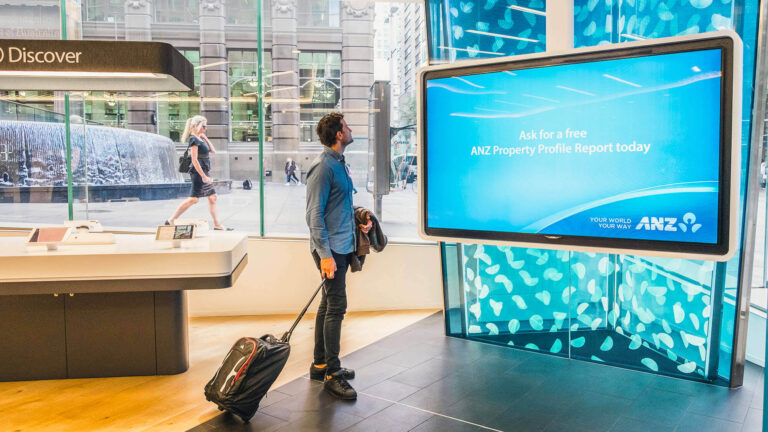Long gone are the times when the only efficient method used for marketing was phone-calling or static billboards. Yes, static billboards. They are no longer the next big thing. What is it then? You’re probably asking. Well, welcome to the world of digital signage.
It was about time to start utilizing the advanced technology we have in 2024, so from now on and in the next couple of years you should be expecting a couple of drastic changes in the marketing world. Are you wondering what digital signage is, why is it so better, and how it works? Tune in and you’ll learn. Let’s take a look.
What is Digital Signage?
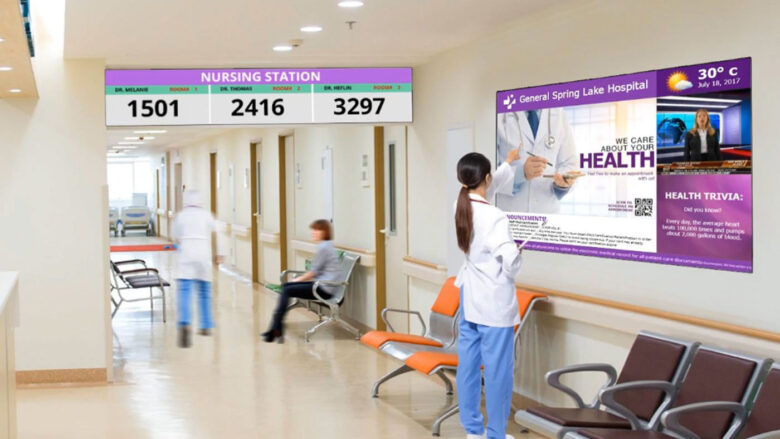
Ever wondered how to make your working environment slightly different than what everyone is used to seeing when they walk into an office, a corporate hall, or a meeting room? Banners and static logos are pretty outdated, honestly. Well, thankfully, digital signage is just the freshness you need. But before you go and invest in this, it’s important to know how it works and what exactly it is in the first place. Let’s take a look.
The definition for digital signage is: “A content distribution platform that can playback digital content, one previously assigned by the owners, usually a marketing agent or a digital advertisement expert employed with the purpose of representing and exposing a certain brand, service or a product.” In short, it’s a sign, just like the ones we have out on the street, but instead of displaying something in a static manner, it’s a bit more interactive and cool to watch. But, this is not all about aesthetics.
The efficiency improvement of Digital Signage
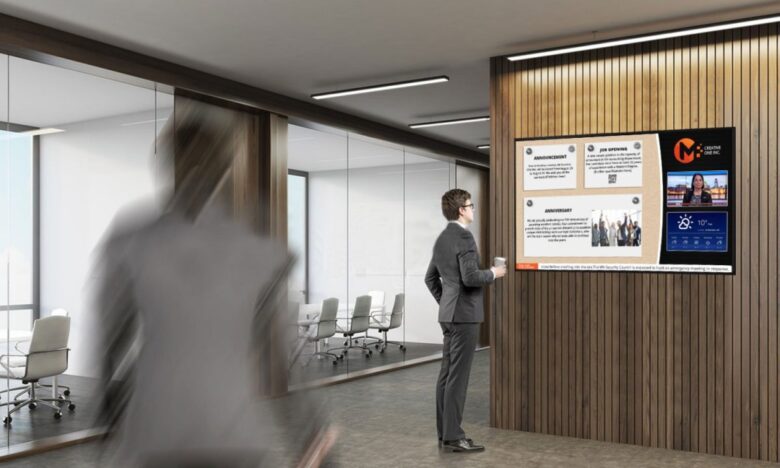
What if you have a slightly more complex product to advertise or a slightly more complicated service that you offer to all your customers? How are you going to fit all of that information on a static sign without “cluttering” it completely and running the design? After all, you’re probably aware that nobody likes to be presented with a huge “wall of text” when walking down the street. It’s just not a pleasant sight and it doesn’t attract any looks, which translates to completely missing the point of marketing.
Well, with Digital Signage, the so-called “slides” are constantly changing, presenting the nearby bystander with new and fresh content, preventing them from rolling their eyes off out of boredom. No, seriously, you can fit multiple different designs or even create an entire presentation to better explain the concepts and show your product or service in a much better light when using Digital Signs instead of static ones.
You can even add slides that present your payment options, contact information, and everything else that’s important for your business. While we’re at contact information, www.indigoworkplace.com is a website where you can see exactly how this is done. Presenting contact information in a professional way by using Digital Signage technology.
Okay, now that we got that out of the way, let’s take a look at the even more advanced version of Digital Signage, the Interactive Digital Signage technology. Welcome to the future?
Interactive Digital Signage
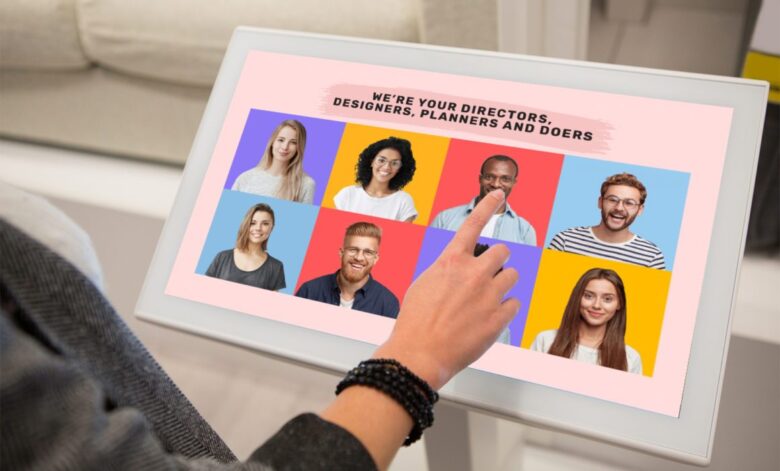
With the technology we have nowadays, Digital Signage can be interactive. You can get close to a sign and swipe for yourself, interact by changing the slides, or anything else that’s available as a function. It seems a bit futuristic but it is possible with today’s technology, and it already is implemented in larger corporations. In developed countries, there are interactive billboards on the streets, most of the time displaying a powerful message. There are other examples as well, such as wayfinding terminals, etc…
There are different ways to control digital signage interactions, here are the most common examples:
- Gesture and motion tracking
- Touch control
- Radiofrequency identification
- Smartphone / Android interactions
- QR Codes technology / Camera scanning method
Interacting in any of these ways on a compatible digital signage platform will create an immersive and interesting experience for the consumers, possibly increasing the chances to impress them with your use of technology, and hopefully selling your product or service. It’s just a matter of time before these types of interactive billboards become the standard on all streets in all countries.
Tempered glass for digital signage
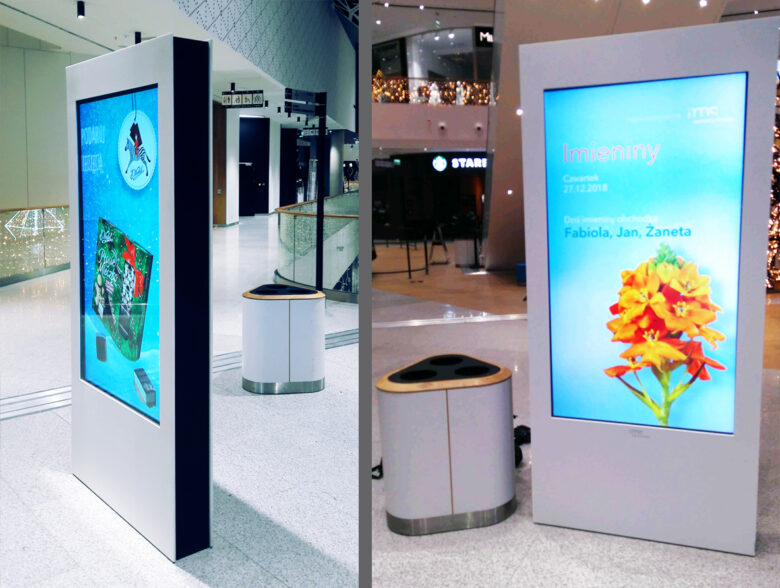
Some digital signs are made out of tempered glass and they can still be easily interacted with, although the glass is thick. Tempered glass is used in order to make the signs vandalism-proof because they do cost a lot of money to make, so they shouldn’t be easily breakable. This material also helps the signs in the resistance of rain, hail, and other harsh conditions. The ones for indoor use however are not built out of such sturdy and durable materials. Usually, regular glass is used because it’s cheaper.
Digital Signage for public navigation

In huge cities, like Tokyo for example, where everything is just way too overwhelming for the average visitor, digital signs are used for displaying information, navigations, and a lot more. These can also be found at airports, bus stations, and in front of concert halls, etc… Basically, everywhere a person may need some more information in order to navigate through the area more easily.
Conclusion
The era of static signs is over and it’s time for digital and interactive signs to take over. They are more expensive to make but they play their role a lot better when it comes to fascinating and attracting customers, visitors, and consumers in general. Different materials are used for digital signs, mostly tempered glass for the outdoor ones so they can be resilient to vandalism.
When it comes to digital signage, the interaction between the platform and the consumer can be established in multiple ways, mostly by the usage of smartphones.
If you want to make your workplace more modern and “up-to-date”, you can replace your old static signs with digital signage, furtherly increasing their efficiency and displaying your content in a more interactive style.

